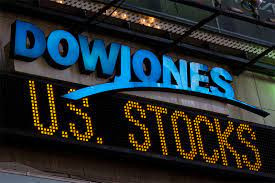No products in the cart.
Trending T-shirt
Top 10 Notes About Dow Jones
The Dow Jones Industrial Average, often referred to as the Dow Jones, is a vital benchmark for the performance of the American stock market. Composed of 30 significant companies traded on the New York Stock Exchange, the Dow Jones reflects the overall health and trends of the U.S. economy. In this essay, we will delve into the top 10 essential notes about the Dow Jones and its impact on global finance.

- Historical Significance: Charles Dow and Edward Jones founded the Dow Jones Industrial Average in 1896. It was initially designed to gauge the performance of major industrial companies, and it has since evolved into an index that includes various sectors, reflecting the diversification of the American economy.
- The 30 Components: The Dow Jones consists of 30 major companies from various industries, such as technology, healthcare, finance, and consumer goods. These components include household names like Apple, Microsoft, and Boeing.
- Price-Weighted Index: Unlike other stock market indices, the Dow Jones is a price-weighted index. This means that stocks with higher prices have a more significant impact on the index’s movement. As a result, a percentage change in a higher-priced stock has a more substantial influence on the Dow.
- Market Performance: The Dow Jones is often used as a barometer of the overall market performance. A rising Dow suggests a robust economy and positive investor sentiment, while a falling Dow can signal economic concerns or bearish sentiment.
- Economic Indicators: The Dow Jones is closely watched by economists, analysts, and investors as an economic indicator. It provides insights into the overall health of the U.S. economy and can signal economic trends and potential recessions.
- Global Impact: The Dow Jones has a significant influence on global financial markets. Many international investors use it as a reference point for making investment decisions, making it a critical benchmark for international markets as well.
- Volatility: The Dow Jones is known for its occasional periods of volatility, where it can experience rapid and substantial price swings. These periods are often accompanied by heightened uncertainty in financial markets.
- Long-Term Growth: Despite short-term fluctuations, the Dow Jones has shown remarkable long-term growth. Over the years, it has consistently trended upward, reflecting the growth and innovation of American companies.
- Investment Strategy: Many investors use Dow Jones-based exchange-traded funds (ETFs) and index funds as part of their investment strategies. These funds aim to replicate the performance of the Dow, providing a convenient way for investors to gain exposure to a diversified portfolio.
- Diversification Benefits: Diversifying a portfolio with Dow Jones stocks can reduce risk. The inclusion of companies from various sectors helps spread risk and mitigate the impact of poor performance in any single industry.
In conclusion, the Dow Jones Industrial Average remains a critical element of the global financial landscape. It provides valuable insights into the performance of the U.S. economy and serves as a barometer for investor sentiment. As it continues to evolve and adapt to changing market dynamics, investors and analysts alike will continue to rely on the Dow Jones as a vital tool for making informed investment decisions. Whether one is an experienced investor or a novice, understanding the top 10 notes about the Dow Jones is essential for navigating the complex world of finance and investment.

